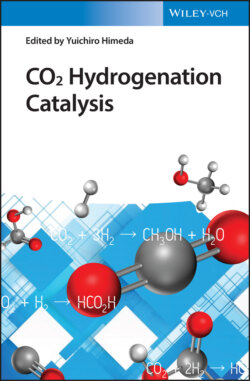Читать книгу CO2 Hydrogenation Catalysis - Группа авторов - Страница 20
1.4.2 Energy and H2 Supply
ОглавлениеAnother consideration is the energy required to capture and convert CO2, which must certainly be derived from renewable sources (Figure 1.5) [38]. If this energy comes from fossil oils, much more CO2 will be emitted than separated. Fortunately, the renewables now account for over 25% of global power output (hydro: 16%, wind: 5%, PV: 2%), [1] and the costs of PV and wind power become even lower than that of fossil fuels (natural gas and coal) (Figure 1.6) [39]. Thus, electricity from renewable sources can be converted into H2 by water electrolysis, which can be performed on an industrial scale. Nevertheless, H2 produced by electrolysis systems (2.5–6 US$/kgH2) is at present more expensive than that from current industrial production based on conventional fossil sources, like natural gas reforming and coal gasification (<1 US$/kg H2) [40, 41].
Figure 1.5 Low‐carbon electricity generation by source in 2017.
Source: Data from explore energy data by category, indicator, country or region (IEA) [38].
Figure 1.6 Levelized cost of energy comparison: Renewable energy versus conventional generation.
Source: Data from Lazard.com, Lazard's levelized cost of energy analysis [39].
